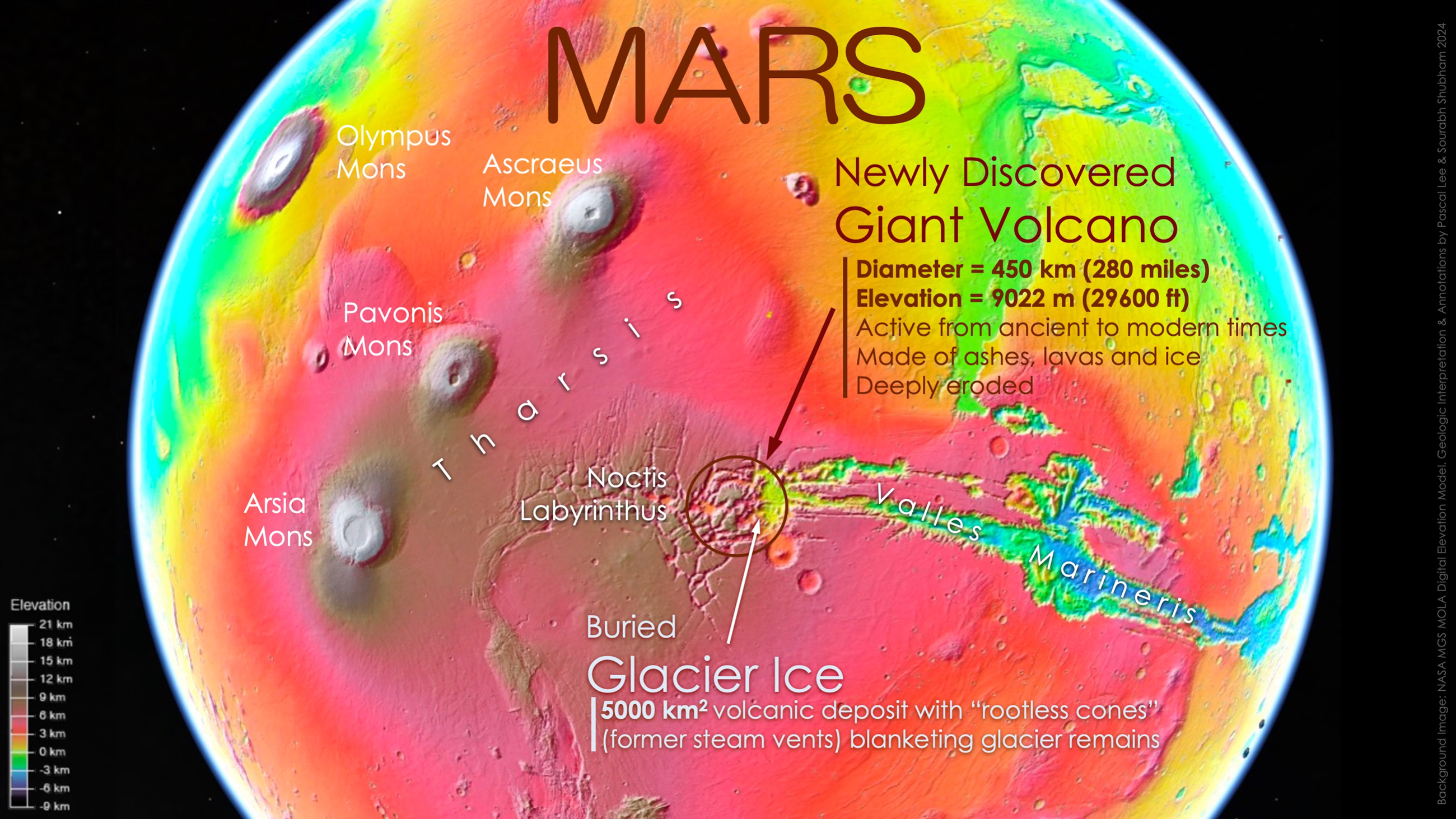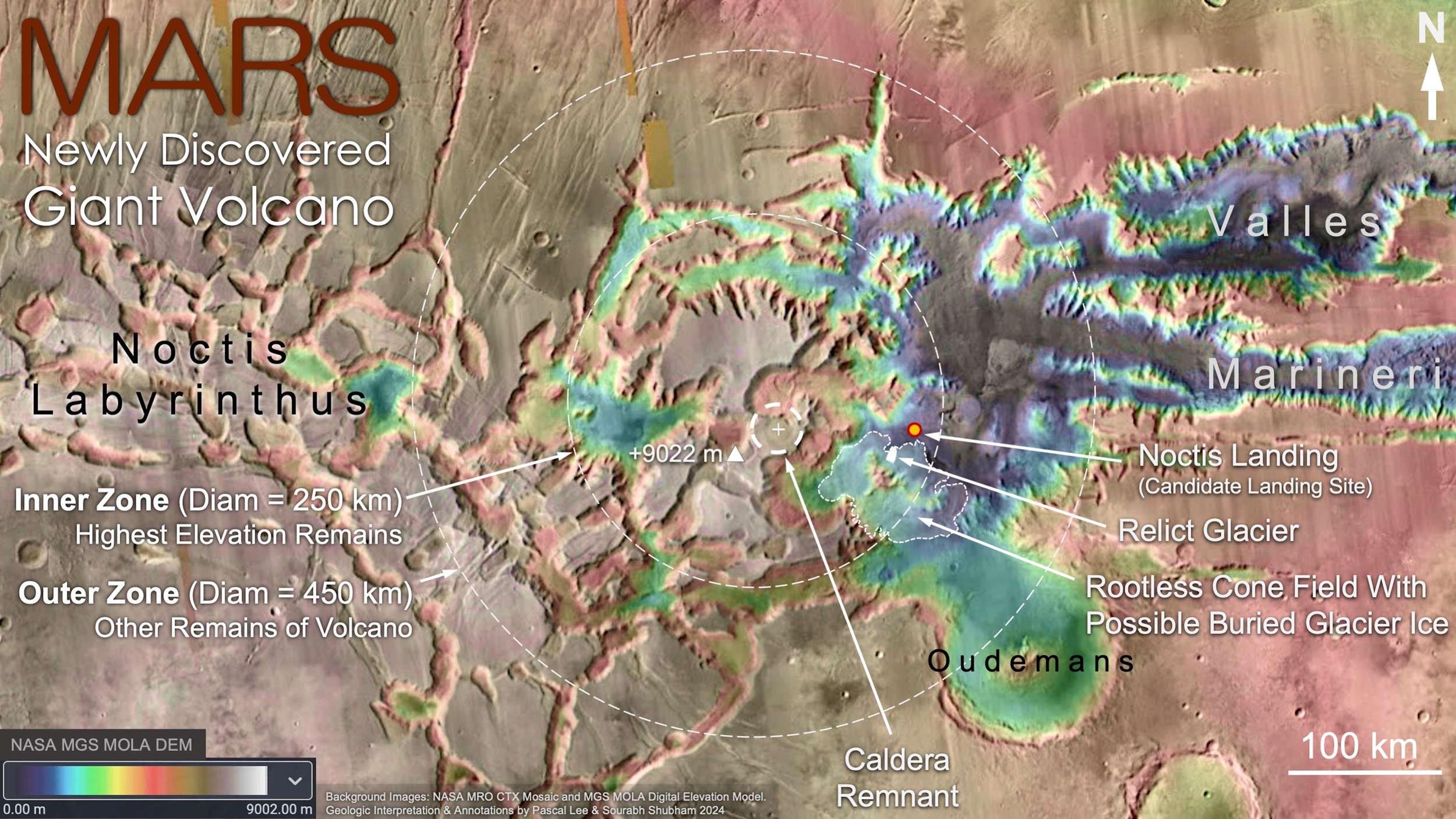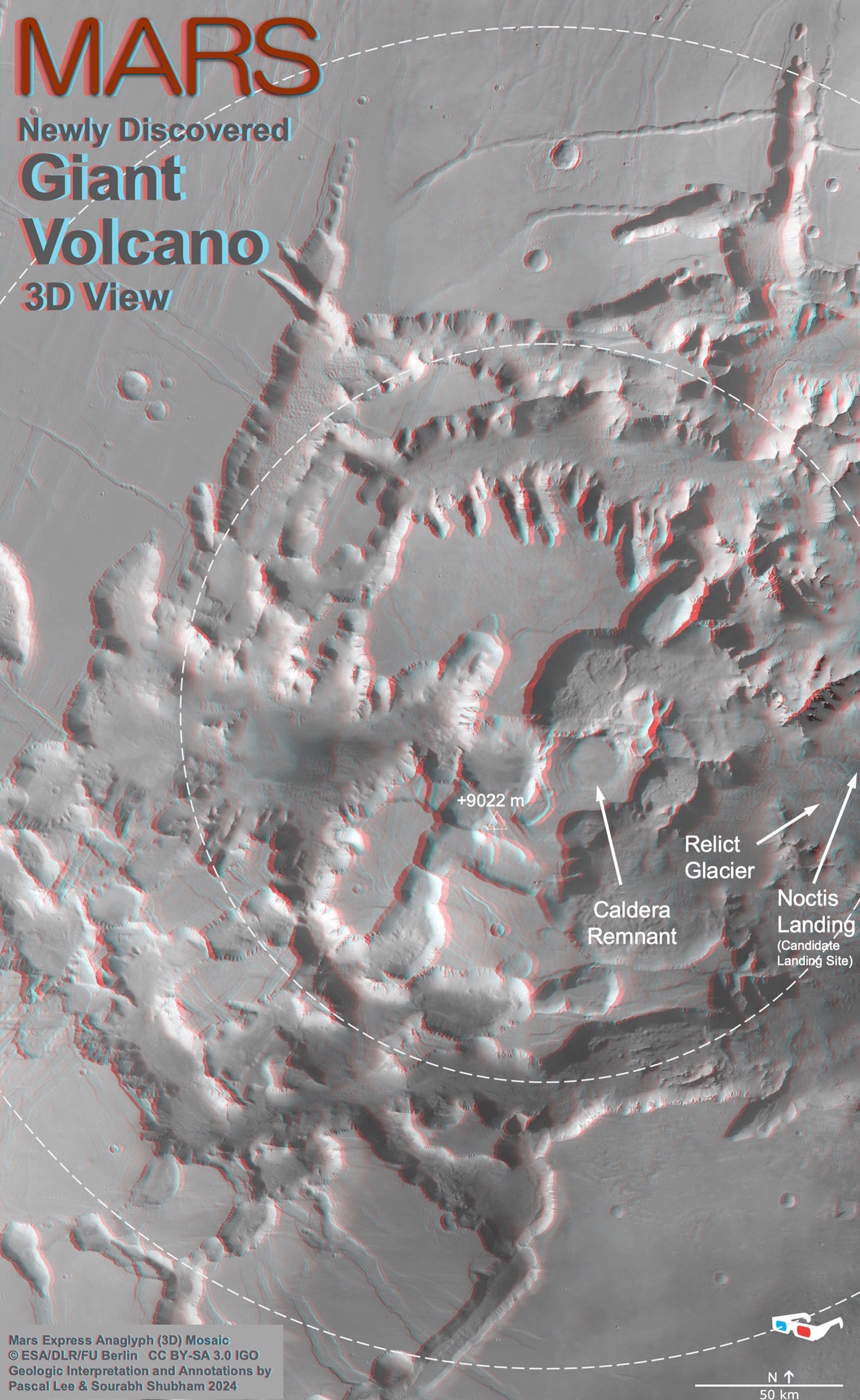A Monstrous Volcanic Secret Hidden in Plain Sight on Mars
Mars has always been a world of intrigue, captivating explorers and scientists alike with its mysterious past and tantalizing secrets. Despite decades of scrutiny, the Red Planet continues to defy expectations, revealing hidden wonders that challenge our understanding of its evolution.

Mars has always been a world of intrigue, captivating explorers and scientists alike with its mysterious past and tantalizing secrets. Despite decades of scrutiny, the Red Planet continues to defy expectations, revealing hidden wonders that challenge our understanding of its evolution.
In a groundbreaking announcement at the 55th Lunar and Planetary Science Conference, a team of researchers led by Dr. Pascal Lee from the SETI Institute and Mars Institute has unveiled a startling discovery: a colossal, deeply eroded volcano concealed within the iconic Noctis Labyrinthus region, near Mars' equator. Dubbed the "Noctis Volcano," this behemoth spans an astonishing 450 kilometers (280 miles) in diameter, rivaling the size of the planet's most renowned volcanic giants. But that's not all – the researchers also uncovered compelling evidence suggesting the presence of buried glacier ice beneath a relatively recent volcanic deposit. This remarkable finding not only sheds light on Mars' enigmatic past but also opens up exciting possibilities for future robotic and human exploration.
A Titanic Volcanic Colossus
Lurking in plain sight, the Noctis Volcano had managed to evade detection for decades, its true nature obscured by the ravages of time and erosion. However, a closer examination of the region's topography and geological features revealed telltale signs of its volcanic origins. At the heart of the structure lies a remnant caldera, a collapsed crater once filled with a molten lava lake. Surrounding this central area, an arc of elevated mesas marks the summit, sloping downwards in all directions to form the volcano's vast flanks.
"We were examining the geology of an area where we had found the remains of a glacier last year when we realized we were inside a huge and deeply eroded volcano," Dr. Lee explained, his voice brimming with excitement.
The sheer size and complexity of the Noctis Volcano attest to its extraordinary longevity, suggesting that it has been actively shaping the Martian landscape for an immense stretch of time. Lava flows, pyroclastic deposits (consisting of volcanic ash, cinders, and pumice), and hydrated mineral formations are scattered throughout the structure's perimeter, further reinforcing its volcanic origins.



A Frozen Relic Beneath the Ash
But the discoveries didn't end there. In the southeastern region of the Noctis Volcano, the researchers stumbled upon a remarkable terrain dotted with low, rounded mounds – a phenomenon they interpreted as "rootless cones." These curious features form when hot volcanic materials encounter water or ice, resulting in explosive steam venting or swelling.
Last year, Lee, Shubham, and their colleague John W. Schutt had identified the remnants of a glacier – a "relict glacier" – within the same volcanic blanket, in the form of a light-toned sulfate salt deposit bearing the distinct morphological traits of a glacier. The researchers hypothesized that this sulfate deposit formed when the volcanic materials reacted chemically with the underlying ice.
Building upon this previous discovery, the team's latest findings suggest that a vast sheet of glacier ice might still be preserved beneath the volcanic blanket, hidden from view but protected by the insulating layers of ash and rock.
"This area of Mars is known to have a wide variety of hydrated minerals spanning a long stretch of Martian history. A volcanic setting for these minerals had long been suspected. So, it may not be too surprising to find a volcano here," Sourabh Shubham, a graduate student at the University of Maryland and co-author of the study, remarked. "In some sense, this large volcano is a long-sought 'smoking gun'."
A Tantalizing Destination for Exploration
The Noctis Volcano and its potential cache of buried glacier ice have ignited the imaginations of scientists and explorers alike. Not only does this discovery offer a unique window into Mars' geological evolution, but it also presents an exciting opportunity for astrobiological research and future robotic and human exploration.
"It's really a combination of things that makes the Noctis volcano site exceptionally exciting," Dr. Lee enthused. "It's an ancient and long-lived volcano so deeply eroded that you could hike, drive, or fly through it to examine, sample, and date different parts of its interior to study Mars' evolution through time. It has also had a long history of heat interacting with water and ice, which makes it a prime location for astrobiology and our search for signs of life."
The potential presence of glacier ice near the planet's equator is particularly intriguing, as it could provide a valuable resource for future human explorers. Water extracted from these ice deposits could be used for hydration, as well as the production of rocket fuel by breaking it down into hydrogen and oxygen components.
"Finally, with glacier ice likely still preserved near the surface in a relatively warm equatorial region on Mars, the place is looking very attractive for robotic and human exploration," Dr. Lee added, his voice brimming with anticipation.
A Treasure Trove of Mysteries
While the Noctis Volcano and its icy secrets have captured the imagination of the scientific community, many questions remain unanswered. How early in Mars' history did this titanic volcano begin its formation? Has it been volcanically active in recent times, and could it potentially erupt again? And perhaps most tantalizing of all – could the combination of sustained warmth and water from the buried ice have provided a habitable environment for life to flourish?
As researchers continue to unravel the mysteries surrounding the Noctis Volcano, one thing is certain: this remarkable discovery has transformed a once-overlooked region into a prime target for future exploration and scientific inquiry. With each new revelation, Mars continues to defy our expectations, beckoning us to explore its enigmatic landscapes and unlock the secrets of its tumultuous past.
In the words of Dr. Lee, "It's an ancient and long-lived volcano so deeply eroded that you could hike, drive, or fly through it to examine, sample, and date different parts of its interior to study Mars' evolution through time." The Noctis Volcano offers an unparalleled opportunity to decipher the Red Planet's geological history, and perhaps even uncover traces of life that may have once thrived in its warmth and water.
As humanity sets its sights on exploring the solar system and beyond, discoveries like the Noctis Volcano serve as a reminder that our cosmic backyard is brimming with wonders waiting to be uncovered. With each new revelation, our understanding of the universe expands, fueling our insatiable curiosity and inspiring us to continue pushing the boundaries of exploration and scientific inquiry.
Hey, I'm Saadat Qureshi, your guide through the exciting worlds of education and technology. Originally from Karachi and a proud alum of the University of Birmingham, I'm now back in Karachi, Pakistan, exploring the intersection of learning and tech. Stick around for my fresh takes on the digital revolution! Connect With Me